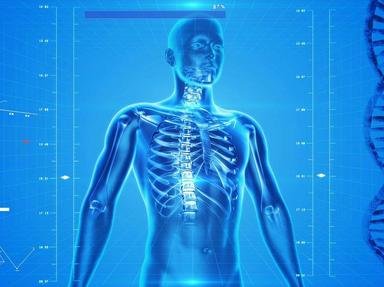Quiz Answer Key and Fun Facts
1. The vertebrae, collectively, make up a more complex structure, which is called what?
2. The humerus is not funny at all. Where would you find it?
3. This well known joint is called the cubitus. Which joint is this in the human body?
4. The pollex is the correct, but rarely used, name for which very important human body part?
5. In humans, the right lobe of the lung is slightly bigger than the left lobe which is unusual in a species known for its symmetry. What occupies the space near the left lung which stops it being the same size as its partner?
6. The scaphoid, lunate, and triquetral bones are just three of the bones that make up which complex, but simply named, body part?
7. There is only one bone in this body part, the femur. What body part are we talking about?
8. The zygomatic, ethmoid, lacrimal and maxilla bones are just four of the seven bones that protect this vital piece of human machinery. What is being protected?
9. This piece of projecting tissue in the mouth is often mistaken for another, more commonly known, tissue. Which tissue are we talking about?
10. The diaphragm separates the chest from the abdomen, where most of the organs are closely packed in. Which organ covers most of the horizontal length of the diaphragm?
Source: Author
1nn1
This quiz was reviewed by FunTrivia editor
rossian before going online.
Any errors found in FunTrivia content are routinely corrected through our feedback system.
